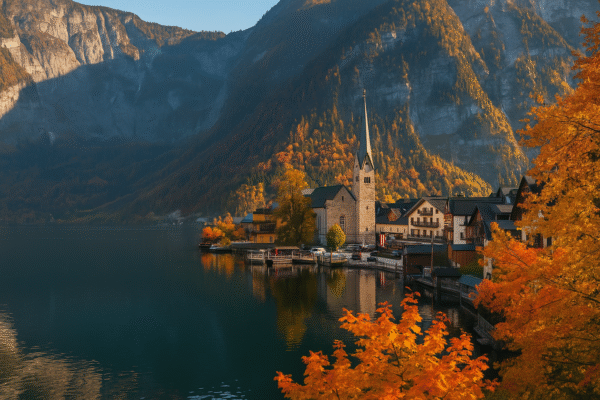Stargazing Tourism on the Rise
Across the world, travelers are looking up—literally. Stargazing tourism has become one of the fastest-growing travel trends, with people leaving city lights behind to experience the night sky in its purest form. From the volcanic peaks of Hawaii to the deserts of Namibia and Australia, these destinations provide unmatched opportunities to connect with the cosmos.
What was once the domain of scientists and astronomers is now attracting photographers, nature lovers, and adventure seekers. For many, stargazing is more than sightseeing—it’s a chance to disconnect, reflect, and feel part of something greater than themselves.
Mauna Kea, Hawaii: A Summit Above the Clouds
Towering nearly 14,000 feet above sea level, Mauna Kea on Hawaii’s Big Island is considered one of the best places on Earth for stargazing. Its altitude, dry climate, and isolation from city lights create crystal-clear skies.
Home to some of the world’s most advanced observatories, Mauna Kea offers visitors a rare opportunity to see the night sky in vivid detail. The Milky Way often appears like a river of stars flowing across the heavens. For both seasoned astronomers and casual travelers, the experience feels nothing short of magical.
Atacama Desert, Chile: A Celestial Playground
The Atacama Desert is one of the driest places on the planet, making its skies exceptionally clear. The high altitude and absence of light pollution allow visitors to see stars, planets, and galaxies with unparalleled clarity.
Astronomical observatories dot the desert, but travelers can also join guided night tours or try astrophotography. The surreal desert landscape adds to the wonder, as the infinite night sky stretches over an endless horizon of sand and rock.
Ladakh, India: Stars Above the Himalayas
High in the Indian Himalayas, Ladakh has become an emerging hotspot for dark sky tourism. Its remote location, minimal light pollution, and high-altitude air make it an ideal destination for stargazing.
Popular spots include Pangong Lake and Hanle, home to India’s highest observatory. Here, travelers can watch the Milky Way arch over snow-capped peaks and tranquil lakes, creating an experience that feels both spiritual and serene.
Namib Desert, Namibia: Silence Under the Stars
The Namib Desert, one of the world’s oldest deserts, offers some of the most dramatic night skies anywhere. With almost no light pollution, the desert allows for a breathtaking view of the Milky Way and constellations visible only in the Southern Hemisphere.
Travelers often combine stargazing with daytime safaris, making the Namib a destination where wildlife and cosmic beauty meet. The vast stillness of the desert makes stargazing here a deeply reflective experience.
Sagarmatha National Park, Nepal: The Roof of the World
In Nepal, Sagarmatha National Park—home to Mount Everest—provides a stargazing backdrop like no other. The Milky Way rising over the world’s tallest mountain is an unforgettable sight.
Trekkers who spend their days hiking through the Himalayas can spend their nights gazing at skies almost entirely free of light pollution. The combination of dramatic peaks and clear night skies makes Sagarmatha one of the most awe-inspiring stargazing spots in the world.
Uluru, Australia: A Cosmic Outback
Deep in the Australian Outback, Uluru offers some of the clearest skies in the Southern Hemisphere. The remote location ensures minimal light pollution, giving travelers a front-row seat to dazzling views of the Milky Way, constellations, and even shooting stars.
For many visitors, stargazing at Uluru is also a cultural experience, with Indigenous guides sharing stories that connect the stars to ancient traditions. The combination of cosmic beauty and cultural depth makes Uluru a unique stargazing destination.
Why Stargazing Tourism Matters
The rise of dark sky tourism is about more than admiring the stars. It reflects a broader shift in travel toward meaningful, nature-based experiences. Remote destinations benefit economically from visitors while promoting conservation and awareness of light pollution.
However, sustainability is key. Too many visitors can damage fragile ecosystems. Local communities and travel providers are working to balance tourism growth with environmental protection, ensuring these pristine skies remain clear for future generations.
Stargazing Meets Sustainable Travel
Many of these destinations have embraced eco-friendly practices. In the Atacama Desert, tours limit group sizes to reduce impact. In Nepal, Sagarmatha National Park manages visitor numbers to protect its delicate alpine environment. At Uluru, stargazing is often paired with cultural programs that emphasize respect for the land.
Travelers, too, are becoming more conscious. They seek experiences that combine wonder with responsibility, choosing operators that prioritize sustainability and community benefit.
Looking to the Future
As interest in stargazing continues to grow, destinations like Mauna Kea, Atacama, Ladakh, Namib, Sagarmatha, and Uluru are set to play an even bigger role in global tourism. They offer travelers not just a view of the stars but a chance to reconnect with nature, culture, and themselves.
For the travel industry, stargazing tourism represents both a challenge and an opportunity: to welcome more visitors while preserving the purity of the skies. Done right, it can create unforgettable experiences that inspire awe, respect, and curiosity about our place in the universe.
The night sky has always fascinated humanity. Now, as stargazing becomes a central part of modern travel, these destinations are giving the world new ways to experience its timeless beauty.
For more travel news like this, keep reading Global Travel Wire



















